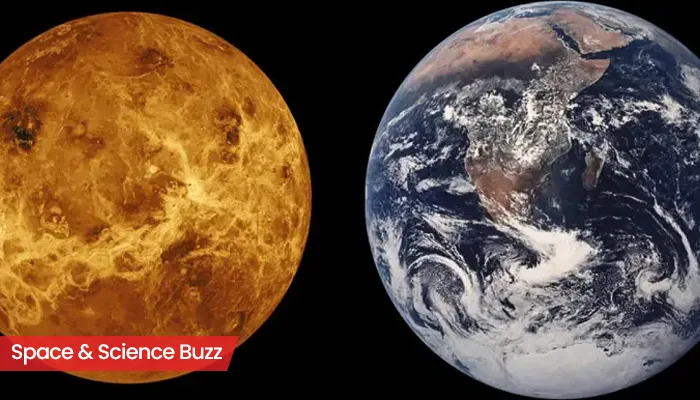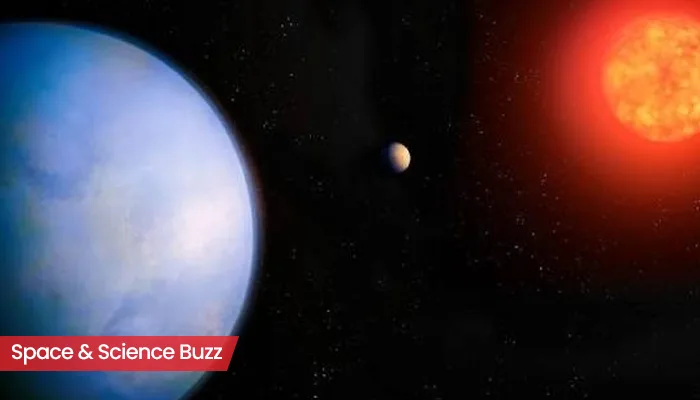Echoes of the Universe: Scientists Detect Mysterious Heartbeat of Black Hole; What We Know so Far
- Soham Halder
- 1 year ago
- 4 minutes read

A new research has detected heartbeat in black holes although they are not alive.
From Einstein’s revolutionary research to Christopher Nolan’s masterpiece ‘Interstellar’, we have come across so many information about the darkest secrets of our universe. Black holes are areas in space where a huge amount of mass is packed into an extremely small volume. Due to this, a strong gravitational pull is created that cannot even let the light to escape the place. Usually, when giant stars collapse, they form black hole followed by yet unknown mechanisms. In this article, we will discuss about latest findings regarding back hole’s heartbeat.
Rhythms of the Cosmos:
Even though the Black holes aren't breathing, they might possess heartbeat. Let's understand how.

(Credit - @redditSpaceView X handle)
When black holes are placed in a binary system or sharing an orbit with another star, they tend to consume a huge amount of gas. During this gas engulfing process, the emitted gases compress and later reach exceedingly high temperatures, causing plentiful X-ray radiation formation. After lot of research, astronomers detected black holes with Cygnus X-1. This is one of the vigorous and brightest sources of X-rays detected from Earth.
This feeding activity of the black hole can continue for millions of years. Only some times, sudden flareup of X-rays are detected revealing some peculiar behaviour of the Black hole.
Usually, regular pulses of activity within such flare events is already reported, which is regarded as “heartbeat flares”. The major reason behind this unique naming is similarity with human heartbeat. The flares have several stages like slow rise, steady decline, and returning to stability, which thoroughly resemble the EKG signal of human heartbeats.
This stellar heartbeat results when a flash of light from a still-forming star reflects off surrounding dust. The pulse takes only a month to propagate outward: https://t.co/mxxpAdOn3k #BeStillMyHeart #ValentinesDay pic.twitter.com/z4cLB7I4FC
— Hubble Space Telescope (@HubbleTelescope) February 14, 2019
(Credit - @HubbleTelescope X handle)
Reasons behind Peculiar Heartbeat:
Astronomers at the Key Laboratory of Particle Astrophysics at the Chinese Academy of Sciences in Beijing explained: “The pulses were due to interactions and instabilities of materials around the black hole.”
When any material gets sucked inside the black hole, “it compresses and forms a thin, rapidly rotating disk. The disk’s inner edge slants down toward the event horizon of the black hole,” as mentioned in the paper published in The Astrophysical Journal.
However, the rest of the disk glows with X-ray radiation during the same time. Gradually, this radiation come over the gravitational pull of the black hole, causing exceptionally unstable situations.
The unique heartbeat is generated as soon as the disk breaks apart while sending a huge clump of material inside the black hole. As a result, a massive amount of radiation is released, prompting the heartbeat pulse.
This is followed by heating up the gas and settle down which keeps on happening repeatedly.
Composite image of the intense radio lobes emitted from the supermassive black hole in the middle of the #Galaxy Cygnus A. X-ray is shown in blue, radio is red and visible light is yellow. pic.twitter.com/fGj10phmiR
— Space (@redditSpaceView) January 2, 2022
(Credit - @redditSpaceView X handle)
The X-ray data collected from Neutron Star Interior Composition Explorer (NICER) and Nuclear Spectroscopic Telescope Array (NuSTAR) in 2022 helped astronomers in these findings.
In the last month, researchers from the Dutch Black Hole Consortium invited space enthusiasts to help them detect black holes through newly launched mobile app Black Hole Finder, developed by Pocket Science.
Till now, only two black holes have displayed such heartbeat. The astronomers are hopeful to get more such findings to further analyse black holes and their surroundings.



.webp)
.WEBP)
.WEBP)
.webp)
.webp)


.webp)
.webp)
.webp)